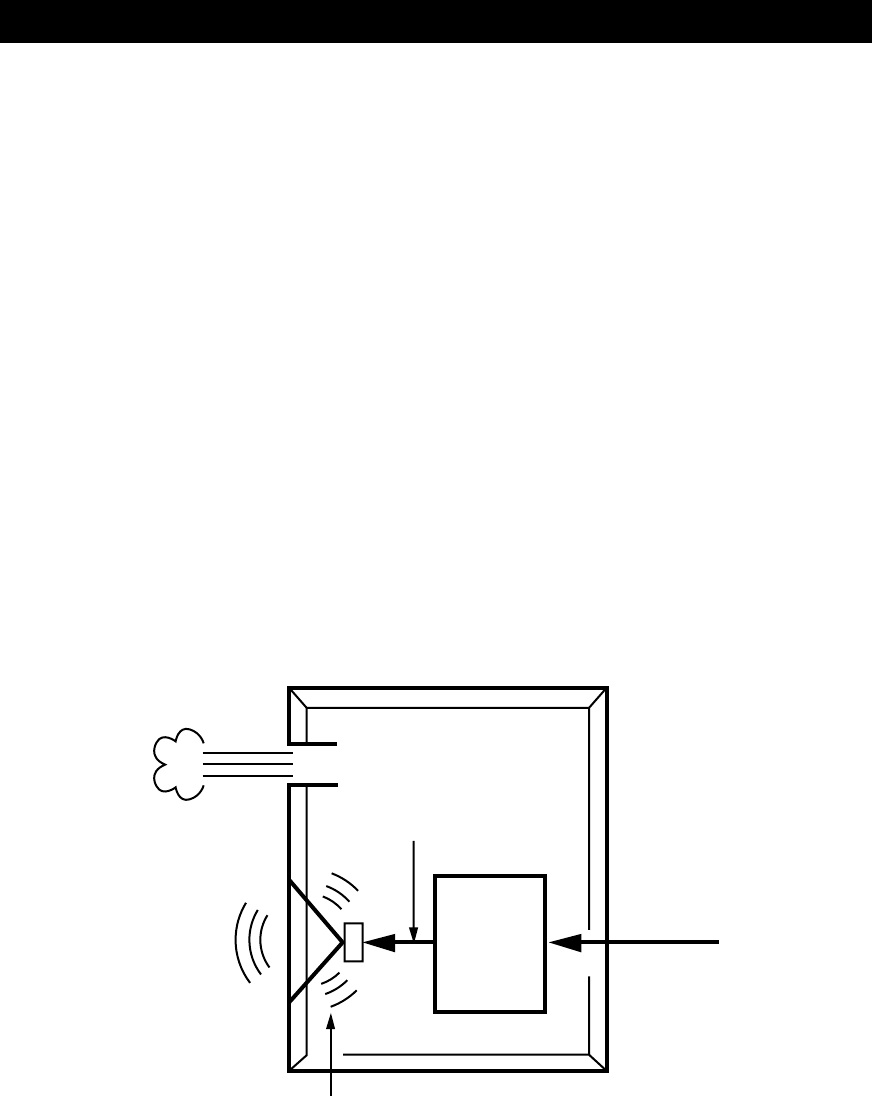
18
The theory of Yamaha Active Servo Technology has been
based upon two major factors, the Helmholtz resonator and
negative-impedance drive. Active Servo Processing
speakers reproduce the bass frequencies through an “air
woofer”, which is a port or opening in the speaker’s
cabinet. This opening is used instead of, and performs the
functions of, a woofer in a conventionally designed
speaker system. Thus, signals of low amplitude within the
cabinet can, according to the Helmholtz resonance theory,
be outputted from this opening as waves of great amplitude
if the size of the opening and the volume of the cabinet are
in the correct proportion to satisfy a certain ratio.
In order to accomplish this, moreover, the amplitudes
within the cabinet must be both precise and of sufficient
power because these amplitudes must overcome the “load”
presented by the air that exists within the cabinet.
Thus it is this problem that is resolved through the
employment of a new design in which the amplifier
supplies special signals. If the electrical resistance of the
voice coil could be reduced to zero, the movement of the
speaker unit would become linear with respect to signal
voltage. To accomplish this, a special negative-impedance
output-drive amplifier for subtracting output impedance of
the amplifier is used.
By employing negative-impedance drive circuits, the
amplifier is able to generate precise, low-amplitude, low-
frequency waves with superior damping characteristics.
These waves are then radiated from the cabinet opening as
high-amplitude signals. The system can, therefore, by
employing the negative-impedance output drive amplifier
and a speaker cabinet with the Helmholtz resonator,
reproduce an extremely wide range of frequencies with
amazing sound quality and less distortion.
The features described above, then, are combined to be the
fundamental structure of the conventional Yamaha Active
Servo Technology.
Our new Active Servo Technology, Advanced Yamaha
Active Servo Technology, adopted Advanced Negative
Impedance Converter (ANIC) circuits, which allows the
conventional negative impedance converter to dynamically
vary in order to select an optimum value for speaker
impedance variation. With this new ANIC circuits,
Advanced Yamaha Active Servo Technology can provide
more stable performance and improved sound pressure
compared with the conventional Yamaha Active Servo
Technology, resulting in more natural and dynamic bass
reproduction.
ADVANCED YAMAHA ACTIVE SERVO TECHNOLOGY
High-amplitude
bass sound
Port
Cabinet
Advanced Negative-
impedance Converter
Active Servo
Processing
Amplifier
Signals of low amplitude
Air woofer
(Helmholtz resonator)
Signals
YST-SW315_215_03.25UB.fm Page 18 Tuesday, April 15, 2003 12:05 PM


















